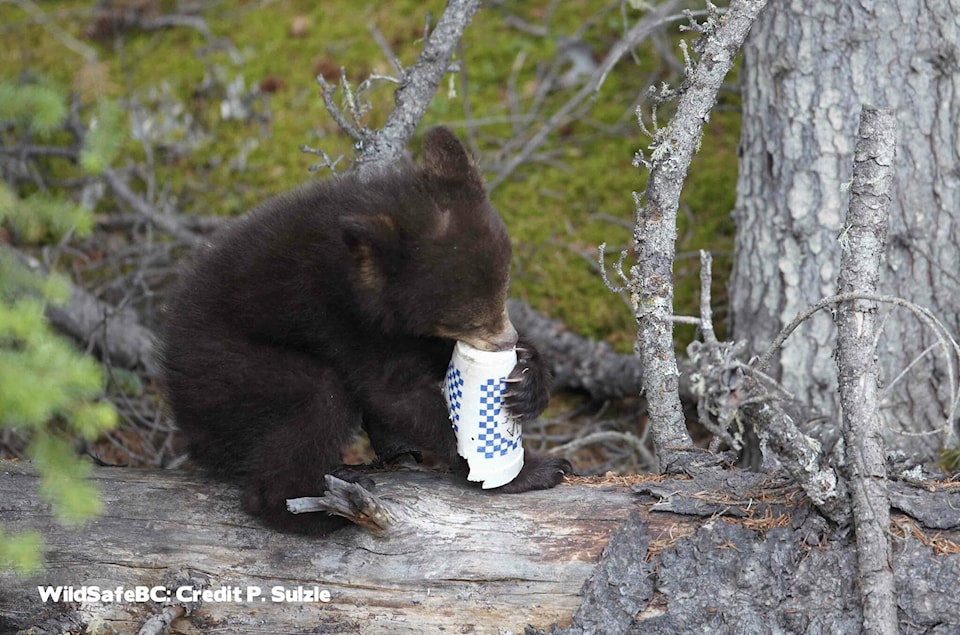Local bears are getting ready to bed down for the winter and are busy looking for last minute meals before they hibernate.
Sadly, some of these meals are being provided by residents. There have been recent reports of local bears accessing human food sources in Creston and the surrounding areas. A familiar pattern in the Creston Valley is bears coming down from the mountains to access fruit in the fall and then, once the fruit is gone, staying to access other foods, such as livestock, garbage and bird feeders. WildSafeBC is asking residents to secure their wildlife attractants, thus encouraging bears to seek what natural foods are left, and then bed down for the winter.
Bears den up for the winter as a way to conserve energy when food is in low supply. During a period called hyperphagia (meaning extreme eating), bears prepare for winter denning by eating three times as much in the fall as they do in the summer. In the fall, bears consume about 20,000 calories per day to gain enough weight to survive and nurture young through the winter. In some areas, food-conditioned bears that are accessing high calorie human food, such as garbage containing organics, may remain active late into the season or may not seek out dens at all.
Bears that remain active in communities are more likely to have negative encounters with people and lead to safety concerns for the neighbourhood. When sources of food are left unsecured, we teach bears to associate humans and our activities with rewards leading to food conditioning. Food-conditioned bears may cause human injury, have negative interactions with our pets, or cause property damage. As a result, they are at risk of being lethally removed by the Conservation Officer Service. Relocation of bears is seldom effective, as the bears often return and get into conflict again. A bear that has learned to access unnatural foods in the fall may emerge from their dens and seek out these easy food sources in the spring. By securing our attractants, we not only ensure our safety but that of our wild neighbours.
Most black bears and grizzly bears den for four to six months in the winter, from November or December until March or April. Bear cubs are born in the den during this period. Bears do not go into true hibernation because their body temperature and metabolic rate do not decrease as much as in other hibernating species, and they may wake up relatively easily during their winter sleep. It is best to avoid areas that have known bear dens. To survive without eating, bears must slow down their physiological systems and live off their fat reserves.
While bears do not eat or drink during this time, they do not urinate or defecate either. Such a build-up of urea would cause humans to die. Bears however, have a unique ability to recycle the build-up of urea, using its constituents to manufacture new proteins. During hibernation, the bear’s body essentially enters a mode of conservation, efficiency, and recycling. Sows give birth to cubs in late January and February and use up even more fat reserves. When bears wake in the spring, they may have lost 30 per cent of their body weight. This is another critical time for humans to secure attractants and not leave source of calories accessible to bears. This includes any organic materials in our garbage, bird seed, barbeque grease, and compost.
Please report sighting of bears, wolves and cougars in communities or wildlife in conflict to the Conservation Officer Service at 1-877-952-7277. These reports are made available to the public through WildSafeBC’s Wildlife Alert Reporting Program at warp.wildsafebc.com. You can also sign up for free email alerts for your area.
READ MORE: B.C. woman gets spooked, licked by bear in her backyard
